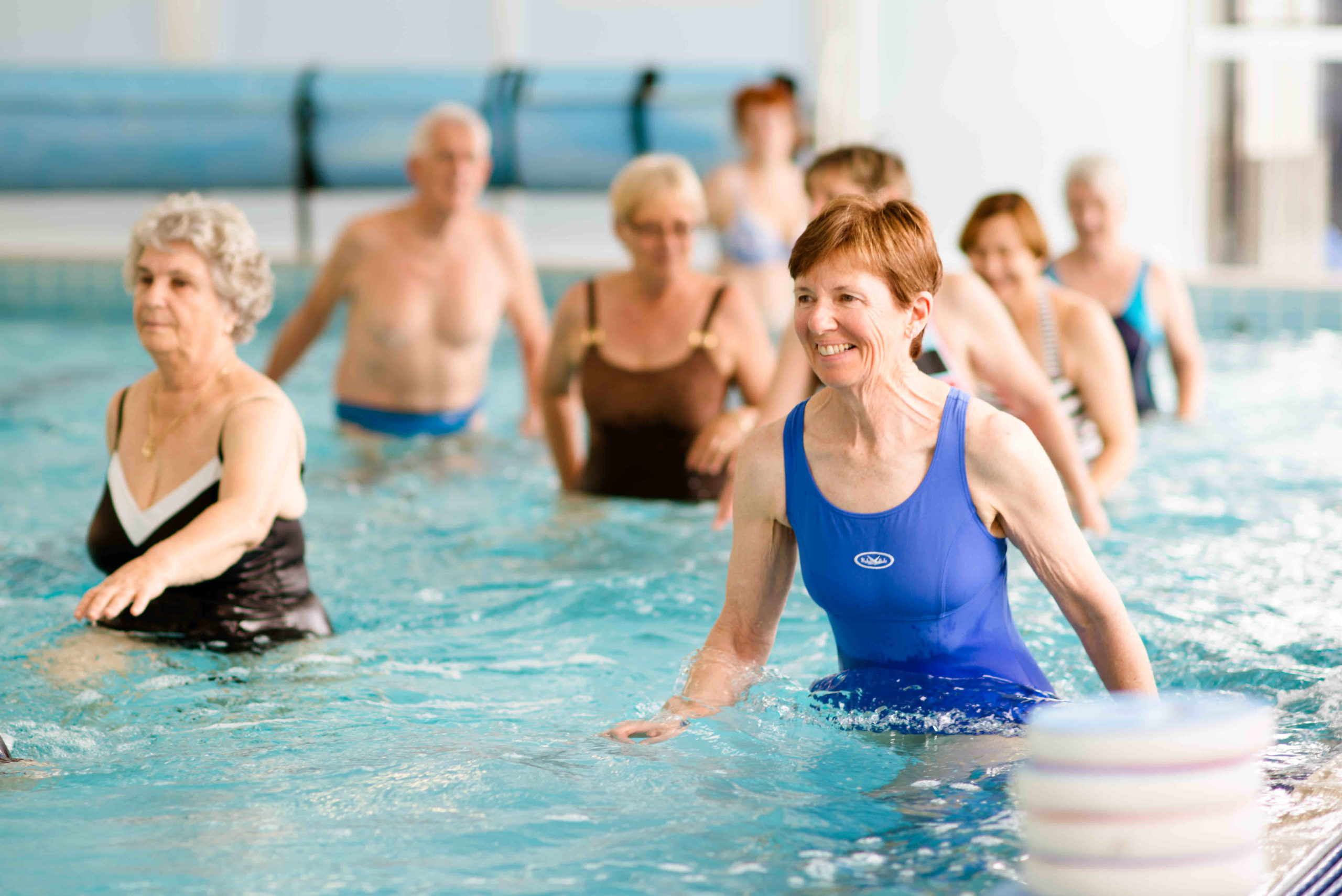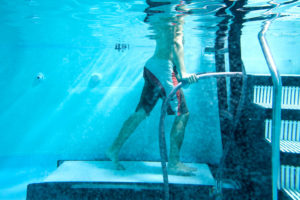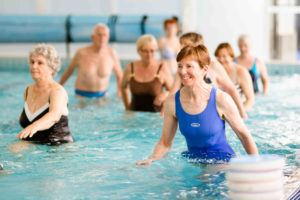

Hydrotherapy or Aquatic Physiotherapy is therapeutic exercise in a warmed pool, supervised by a physiotherapist. The pools are often shallow, making them ideal for exercise and rehab.
Why choose hydrotherapy?
Hydrotherapy pools are very accessible, with ramps and rails for entry and exit to the pool. Exercising within water provides the benefit of buoyancy. With your body submerged in water, up to 90% of your body weight is supported. The warm water within the pools helps aid mobility through increasing flexibility and promoting muscle relaxation. The water itself, also acts as resistance to movement, helping to increase strength. These factors open the opportunity for people who have difficulty exercising on land, to exercise in a low impact, supported and supervised environment.
Who should try Hydrotherapy?
Hydrotherapy is suited for anyone looking to improve their health and general fitness. There are some contraindications and precautions to participating in hydrotherapy but your physiotherapist will discuss this with during your assessment. Hydrotherapy reduces the weight bearing load through joints, thus having the potential effect of reducing pain, makes it beneficial for conditions such as osteoarthritis, lower back pain, rheumatoid arthritis and ankylosing spondylitis. Research has shown that for people ankylosing spondylitis, water-based exercise has a greater impact on their quality of life and pain levels compared to home-based exercise.

Hydrotherapy is also a great form of exercise for those in the community who are at risk of falling. The support and buoyancy of the water reduces the risk of injury and hydrotherapy can provide a great environment where people are still able to access and participate in exercise. Other populations that would benefit include the elderly and people with neurological conditions. For example, research has shown that aquatic physiotherapy has positive effects on walking balance and mobility in those with early stage Parkinson’s disease. Rehabilitation from orthopaedic surgery can be aided greatly through the addition of hydrotherapy. Studies have shown that commencing physiotherapist-led hydrotherapy immediately following a joint replacement can assist with gaining range of motion, improving pain and reducing swelling. Exercising within water can have positive effects on swelling due to the pressure provided by the surrounding water. Following an ACL reconstruction, hydrotherapy can be of benefit by allowing early weight-bearing, increasing muscle strength with water resisted exercises and improving walking pattern.
What is involved in hydrotherapy with a physiotherapist?
Prior to commencing a hydrotherapy session, you will undergo a one-on-one assessment to assess your suitability to hydrotherapy. From there, your physiotherapist will construct a specific hydrotherapy program for you. The program will be tailored to you and the specific goals and outcomes you would like to achieve.
Allsports Physiotherapy offers hydrotherapy at the following clinics:
- Albany Creek
- Calamvale
- Caloundra (Bring Your Body to Life Physiotherapy)
- Jindalee
- Macgregor
- Red Hill
- St Andrews Hospital (Downs Physiotherapy)
- St Vincents Hospital (Downs Physiotherapy)
- The Gap
- Toowoomba (Peak Performance)
- Wavell Heights
- Wellington Point
References
Carroll, L., Morris, M., O’Connor, W., & Clifford, A. (2020). Is Aquatic Therapy Optimally Prescribed for Parkinson’s Disease? A Systematic Review and Meta-Analysis. Journal Of Parkinson’s Disease, 10(1), 59-76. doi: 10.3233/jpd-191784
Dundar, U., Solak, O., Toktas, H., Demirdal, U., Subasi, V., Kavuncu, V., & Evcik, D. (2014). Effect of aquatic exercise on ankylosing spondylitis: a randomized controlled trial. Rheumatology International, 34(11), 1505-1511. doi: 10.1007/s00296-014-2980-8
Momberg, B., Louw, C., & Crous, L. (2014). Accelerated hydrotherapy and land-based rehabilitation in soccer players after anterior cruciate ligament reconstruction: a series of three single subject case studies. Retrieved 1 April 2020, from https://www.ajol.info/index.php/sasma/article/view/31936
Rahmann, A., Brauer, S., & Nitz, J. (2009). A Specific Inpatient Aquatic Physiotherapy Program Improves Strength After Total Hip or Knee Replacement Surgery: A Randomized Controlled Trial. Archives Of Physical Medicine And Rehabilitation, 90(5), 745-755. doi: 10.1016/j.apmr.2008.12.011
Torres-Ronda, L., & Schelling i del Alcázar, X. (2014). The Properties of Water and their Applications for Training. Journal Of Human Kinetics, 44(1), 237-248. doi: 10.2478/hukin-2014-0129
